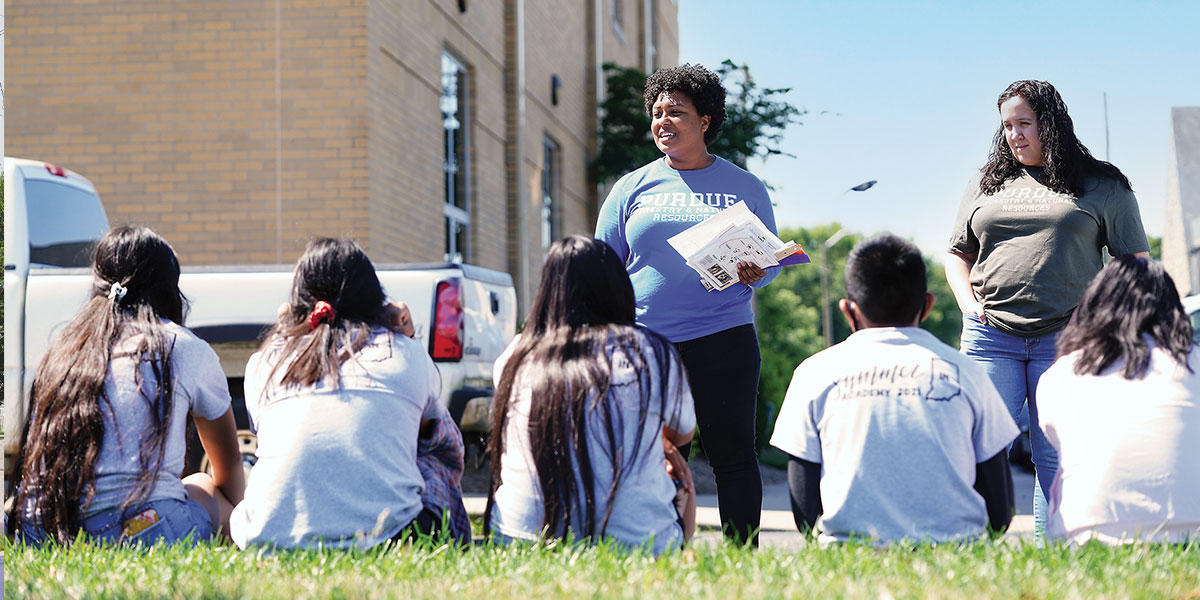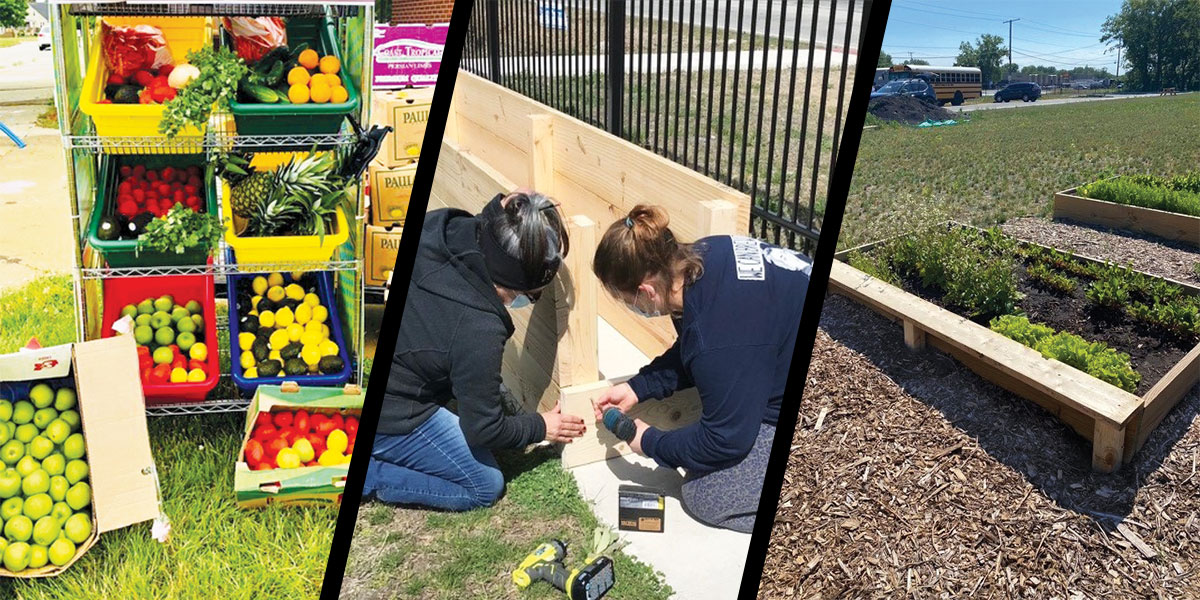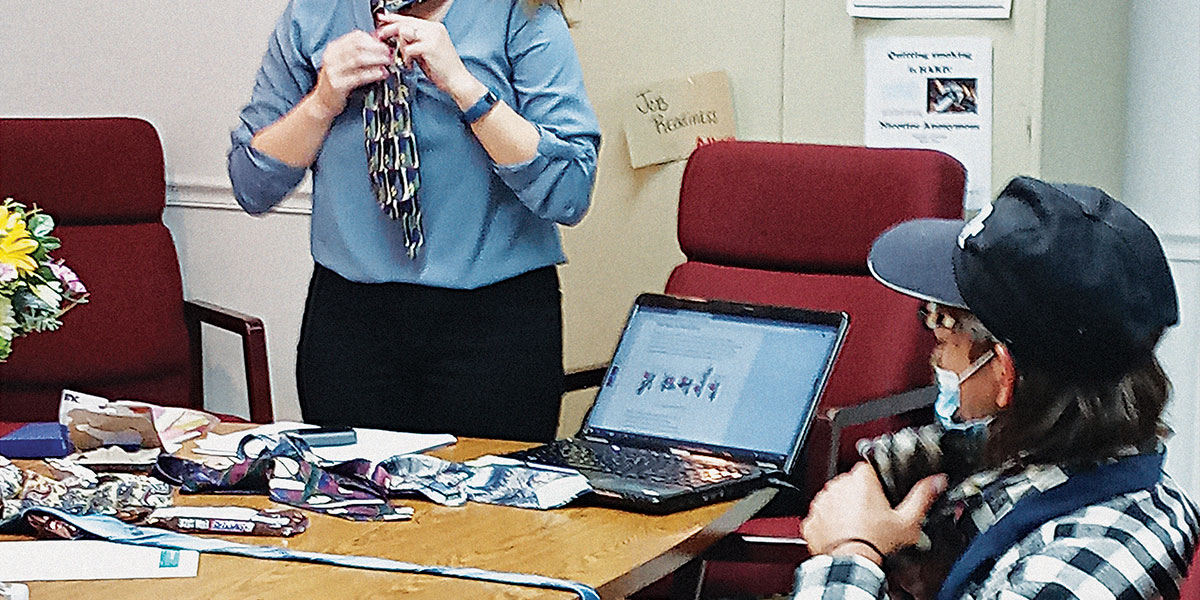Adapting 4-H for Everyone
Ask 17-year-old Eddie Craig (pictured left) if he enjoys his 4-H meetings, and his grin says it all. Eddie, who has Down syndrome, has been active in 4-H since kindergarten, often at the side of his first cousin and former club president, Ben Heidenreich (pictured right).
Eddie and Ben, both of Princeton, Indiana, have had a strong connection their entire lives. Ben is two years older, but with birthdays only four days apart, they have always celebrated together. They’ve shared 4-H as well.
“We are very much a 4-H family,” says Ben’s older sister, Abby Heidenreich, Orange County Agriculture and Natural Resources Extension Educator. Abby and Ben are both 10-year members, and their parents, Chris and Laura Heidenreich, lead the Country Boys & Girls 4-H Club in Gibson County, which meets in their barn.
“He’s just another member, just like everyone else is,” Ben says of his cousin, whose positive attitude and love of music and dance quickly broke the ice with his peers. Ben is now in his first year as an agribusiness major at Vincennes University, while Eddie serves as the club’s song leader, participates in group activities, takes his projects to the fair, and shares his crafts and collections.
Eddie’s engagement with 4-H illustrates how inclusivity serves not only youth with disabilities but also their fellow club members, says Steve McKinley, 4-H Youth Development Specialist – Leadership and Volunteerism. “We know that we have young people who would like to participate, and they have different levels of ability,” he says.
An inclusive 4-H club is a place where young people feel welcomed, and their parents feel it's a safe place for their children to participate.”
- Steve McKinley, 4-H Youth Development Specialist - Leadership and Volunteerism
To help make 4-H accessible to all youth and their parents, Purdue Extension this year compiled wide- ranging Inclusive 4-H resources online. The site offers practical information for 4-H volunteers and youth leaders as well as Extension professionals in county offices.
It includes a webinar on “Welcoming Youth with a Wide Range of Abilities into Your 4-H Program” and fact sheets on visual, hearing and speech disabilities; autism; Down syndrome; various medical conditions; and behavioral disorders, among others.
Guidelines encourage 4-H leaders to learn about a child’s disability and understand how the disability affects that individual. With input from the child and their family and support from Extension, the leaders can then work through accommodations the child may need to best participate in 4-H.
A common theme is that “adaptation is acceptable.” Adaptation can be as simple as allowing a parent to be more actively involved in an event, or as sensible as providing a plywood surface, rather than sawdust, so a 4-H member in a wheelchair can show livestock, if that’s their interest area. “Every situation is different,” McKinley says.
Purdue studied similar inclusion programs from University of Wyoming Extension and Iowa State University Extension and Outreach as a basis for its own, using Purdue’s on-campus Disability Resource Center as another source for information and review. “We can now share these resources across the Extension system, and others can utilize them too,” McKinley says.
When Indiana youth at a recent Teen Leadership Conference discussed what 4-H might look like in the future, one participant brought up a program that matches their members who have a hearing or learning disability with a “buddy” who supports them throughout their 4-H experience. “That’s an example of what can happen,” McKinley says. “I think our young people get it. They are teaching the adults.”
Ben Heidenreich says having his cousin at his side in 4-H was good for Eddie, good for him and good for their fellow club members. Seeing how hard kids like Eddie work to adapt to different situations and complete their projects can “bring a little humbleness” to the other club members, he adds.
Eddie listens, then leans onto Ben’s shoulder. “He’s my best cousin,” he says.



